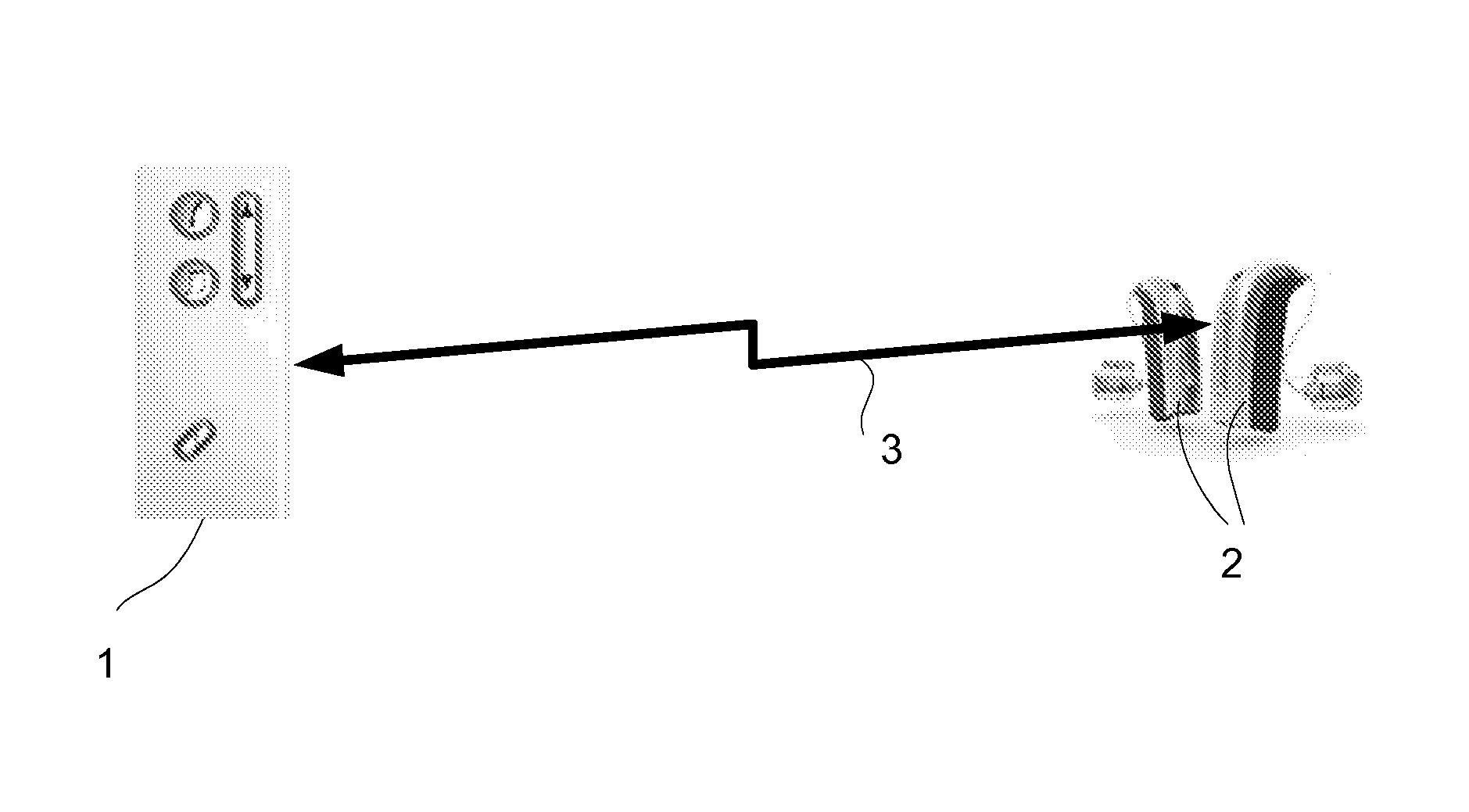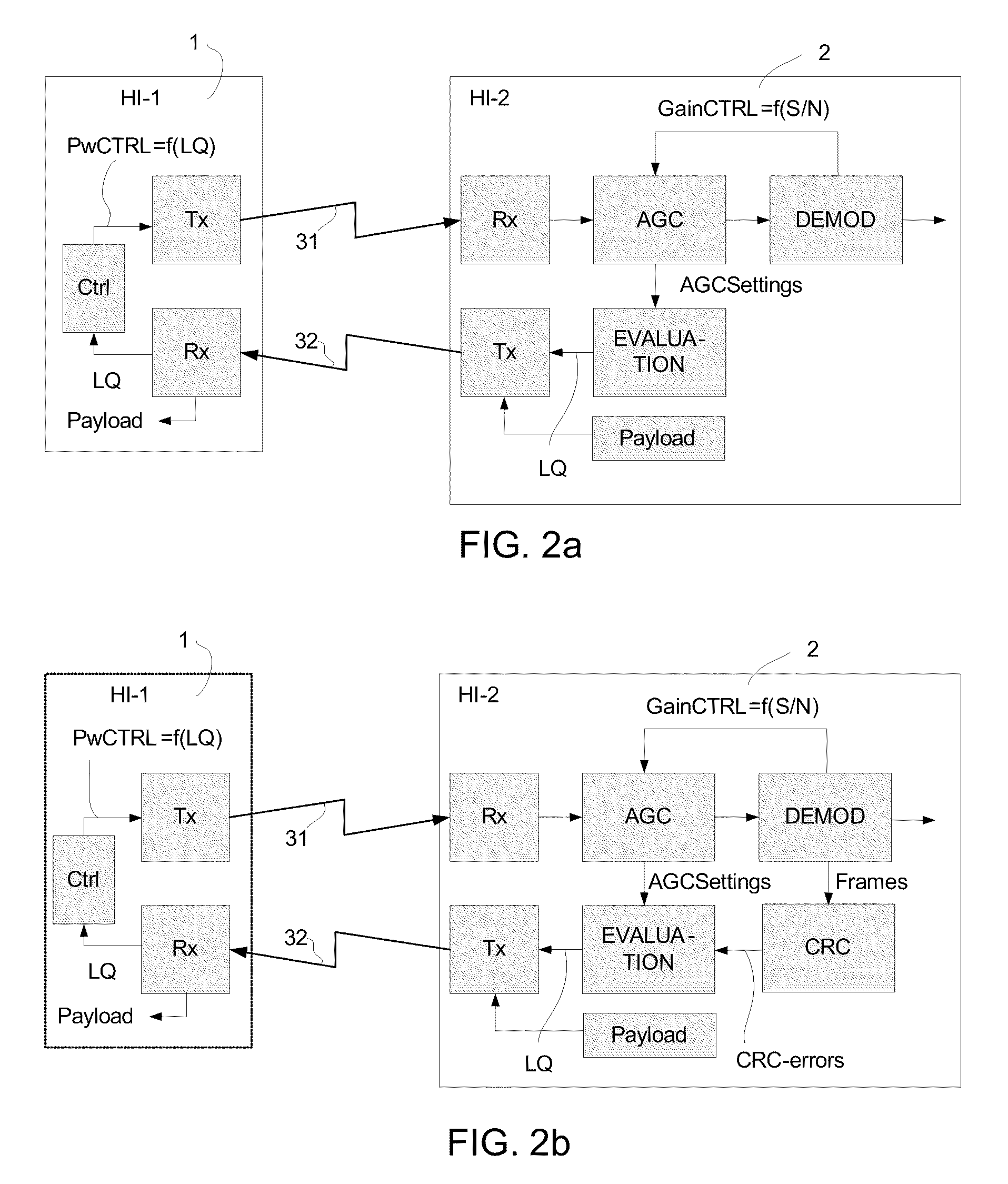Power management in low power wireless link
a low-power wireless link and power management technology, applied in power management, loudspeaker spatial/construction arrangement, transmission, etc., can solve the problems of waste of power by devices with overhead current in a particular setup, and achieve the effect of influencing the speed of power level adjustment, reducing the effect of power level change, and large intended power level changes
- Summary
- Abstract
- Description
- Claims
- Application Information
AI Technical Summary
Benefits of technology
Problems solved by technology
Method used
Image
Examples
Embodiment Construction
[0078]FIG. 1 generally illustrates a wireless link 3 between first and second communication devices 1, 2. Applications of the present invention include the wireless communication between two body-worn, low power communication devices, e.g. two hearing instruments (cf. e.g. FIG. 1a) or between an audio selection device (audio gateway) and one or more hearing instruments (cf. e.g. FIG. 1b). Alternatively, the communication devices 1, 2 could be a pair of headphones, a pair of hearing protective ear plugs, a mobile telephone and a listening device, an entertainment device (e.g. a music player) and a listening device, etc.
[0079]In the following (FIG. 1a), an embodiment of the invention is exemplified by a binaural hearing aid system comprising two hearing instruments adapted to be worn at and / or in each ear of a user, the hearing instruments having a wireless link between them for exchanging control or status information (and possibly audio signals) between them. In an embodiment, no au...
PUM
 Login to View More
Login to View More Abstract
Description
Claims
Application Information
 Login to View More
Login to View More - R&D
- Intellectual Property
- Life Sciences
- Materials
- Tech Scout
- Unparalleled Data Quality
- Higher Quality Content
- 60% Fewer Hallucinations
Browse by: Latest US Patents, China's latest patents, Technical Efficacy Thesaurus, Application Domain, Technology Topic, Popular Technical Reports.
© 2025 PatSnap. All rights reserved.Legal|Privacy policy|Modern Slavery Act Transparency Statement|Sitemap|About US| Contact US: help@patsnap.com



